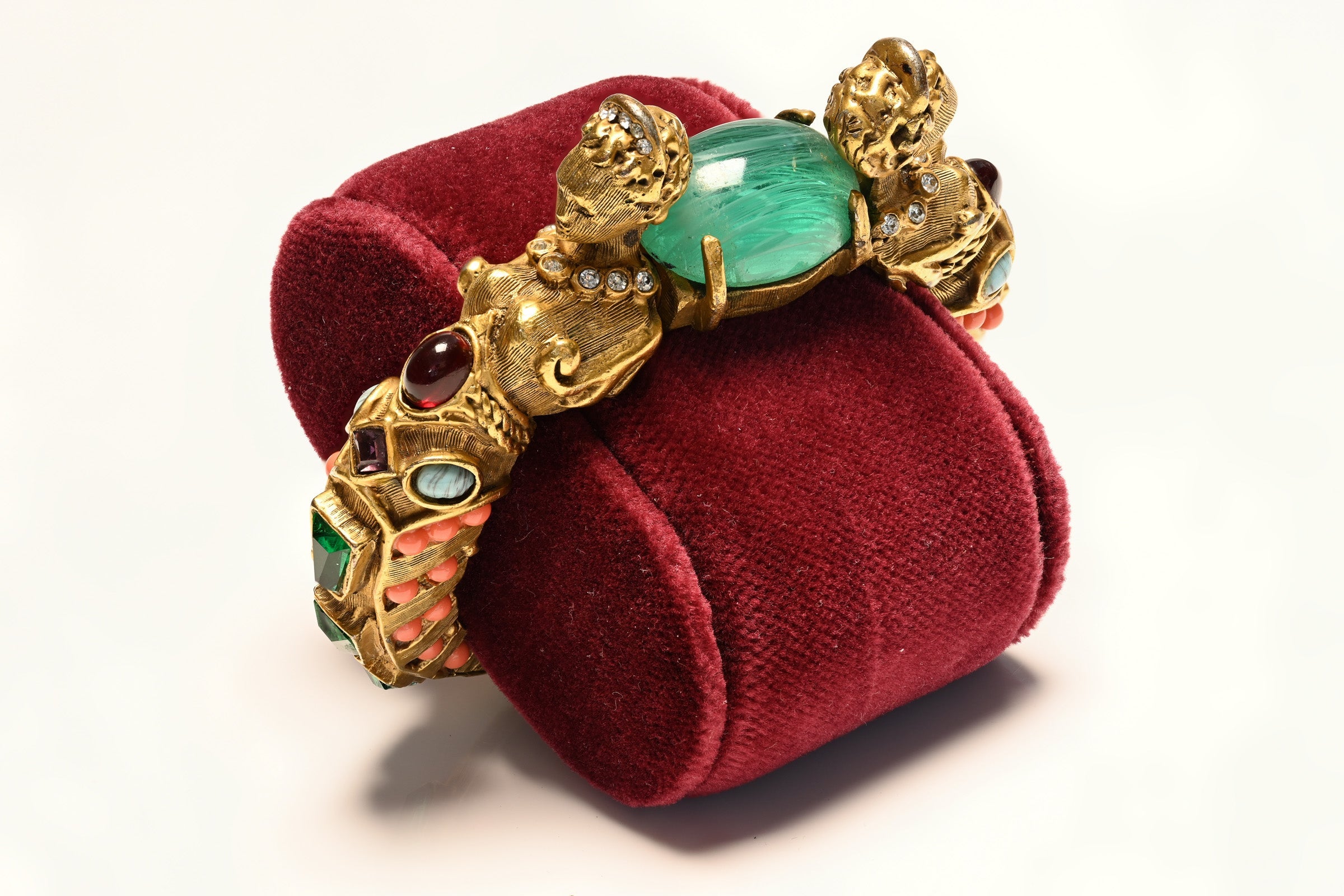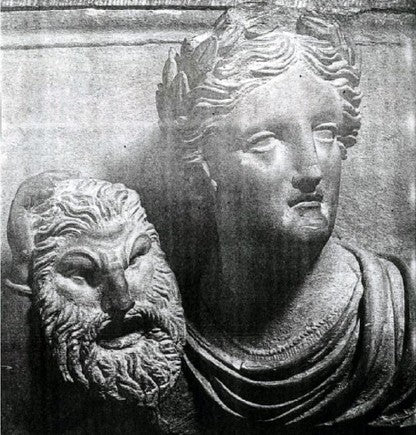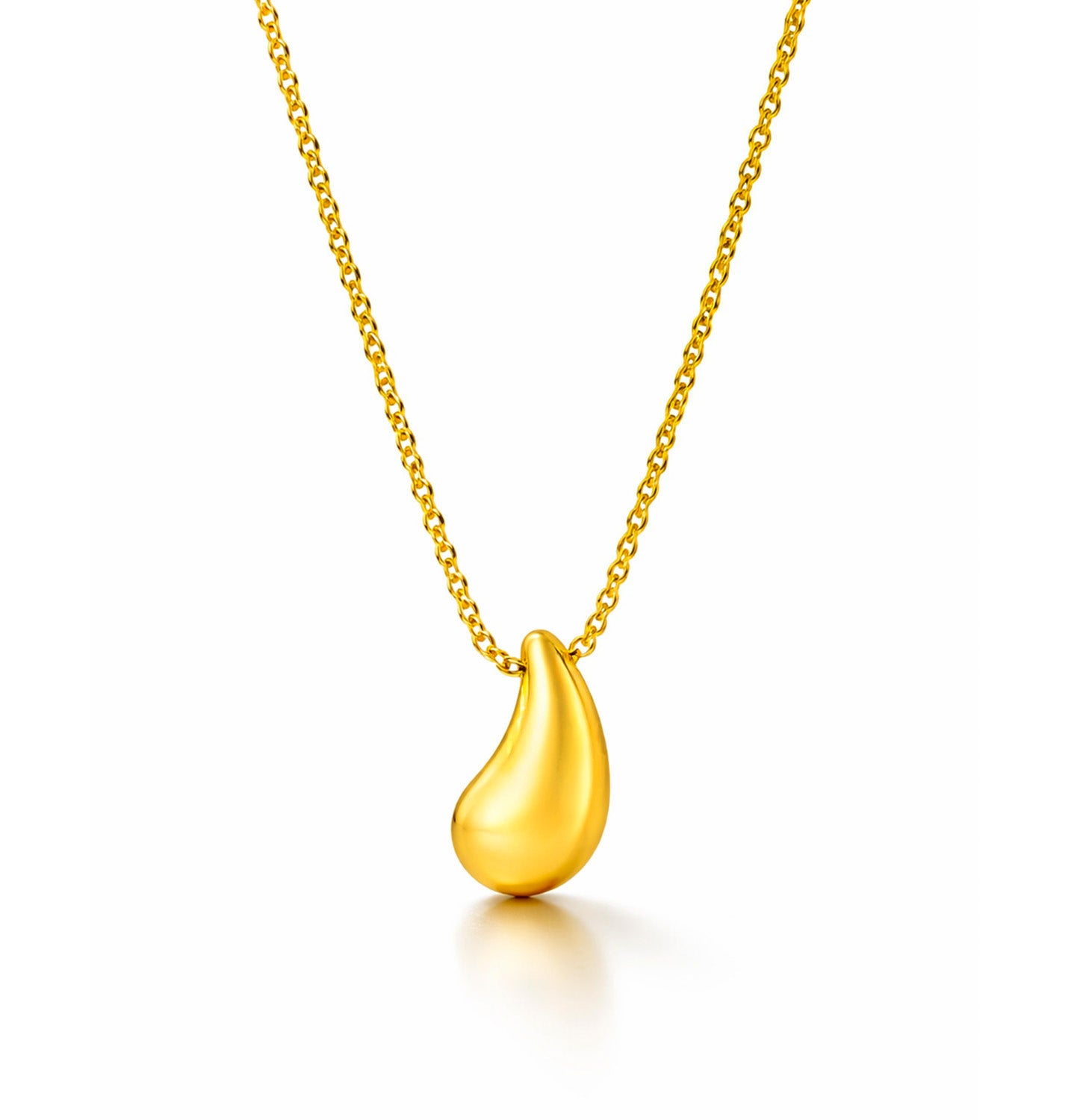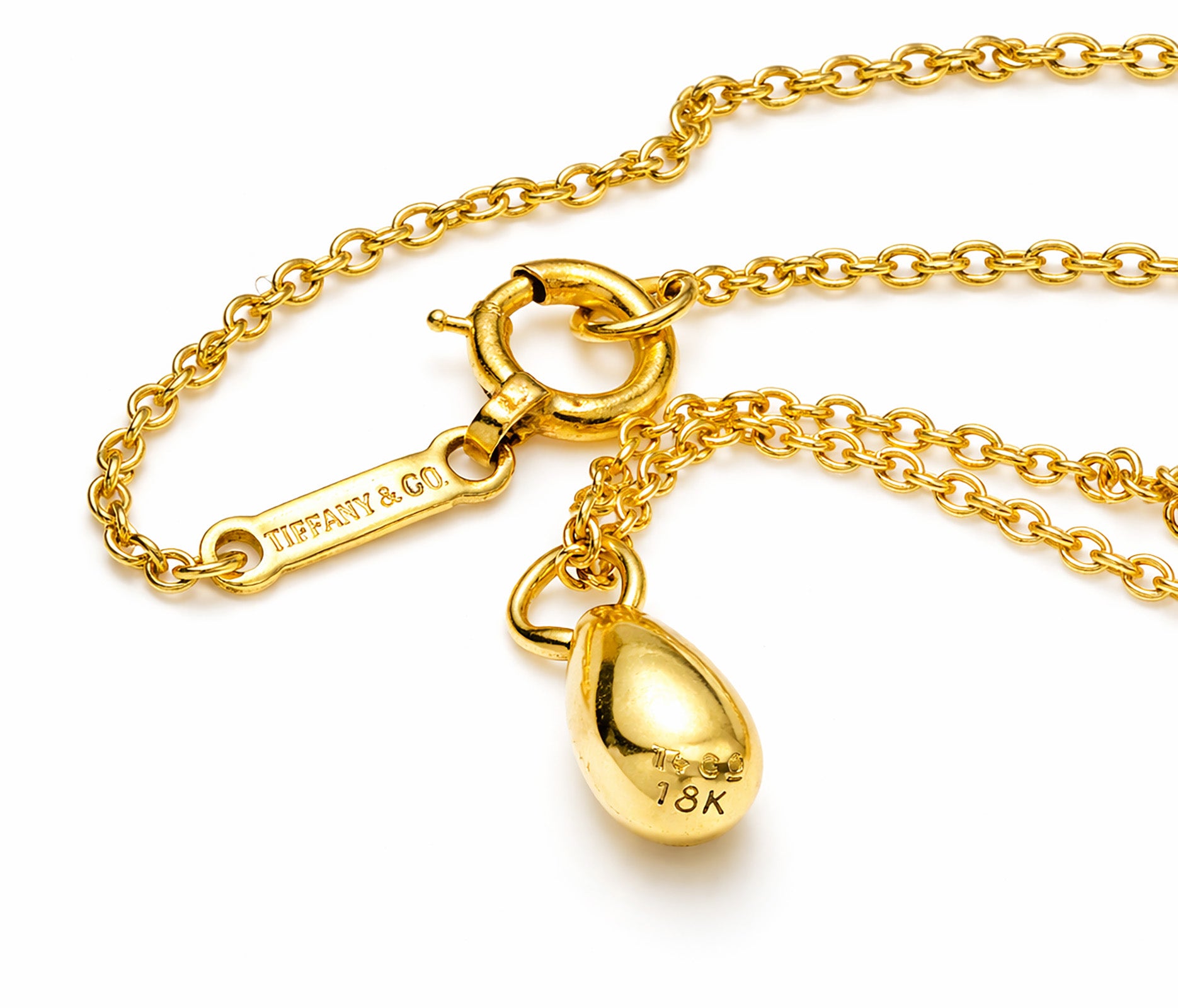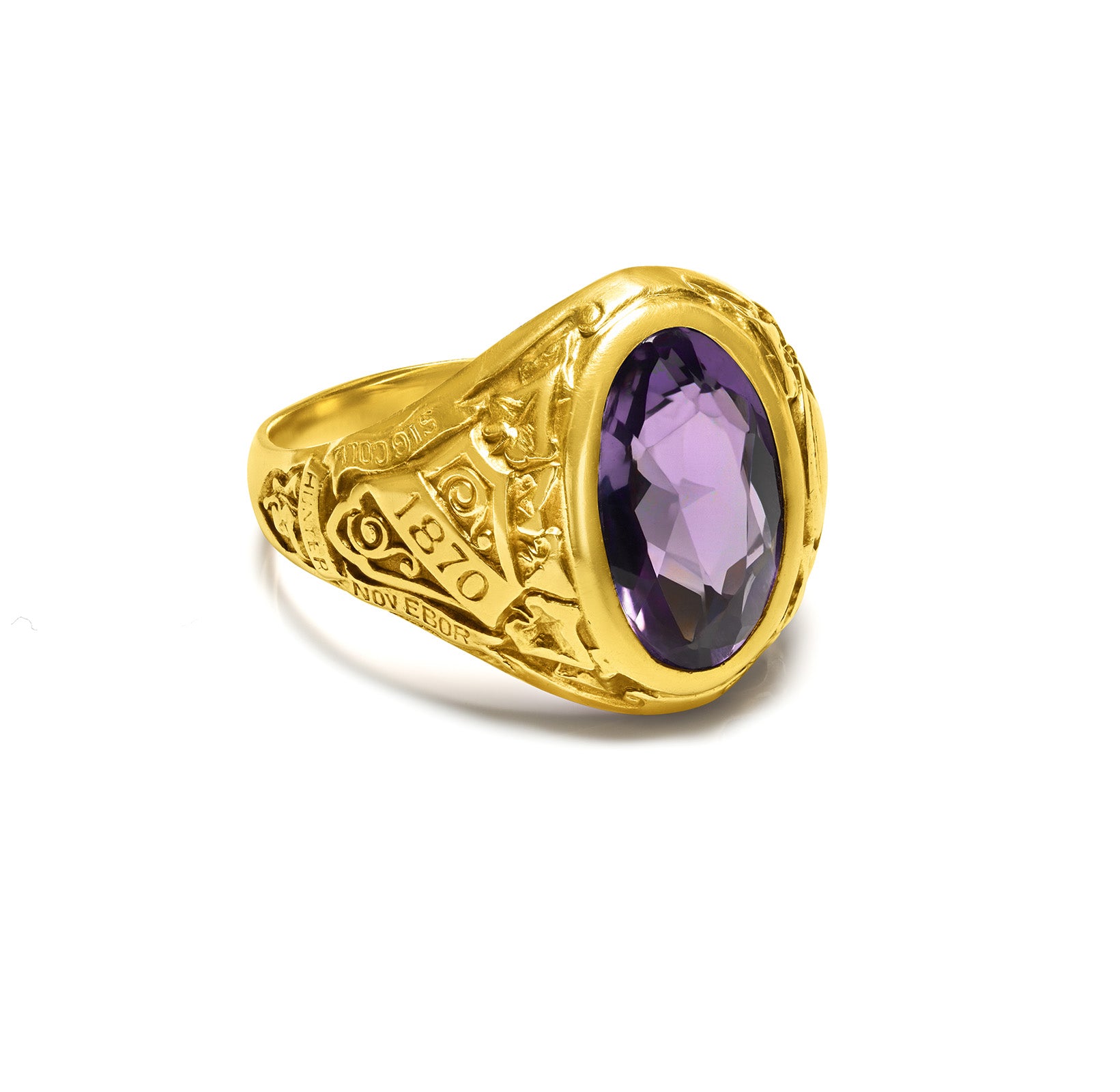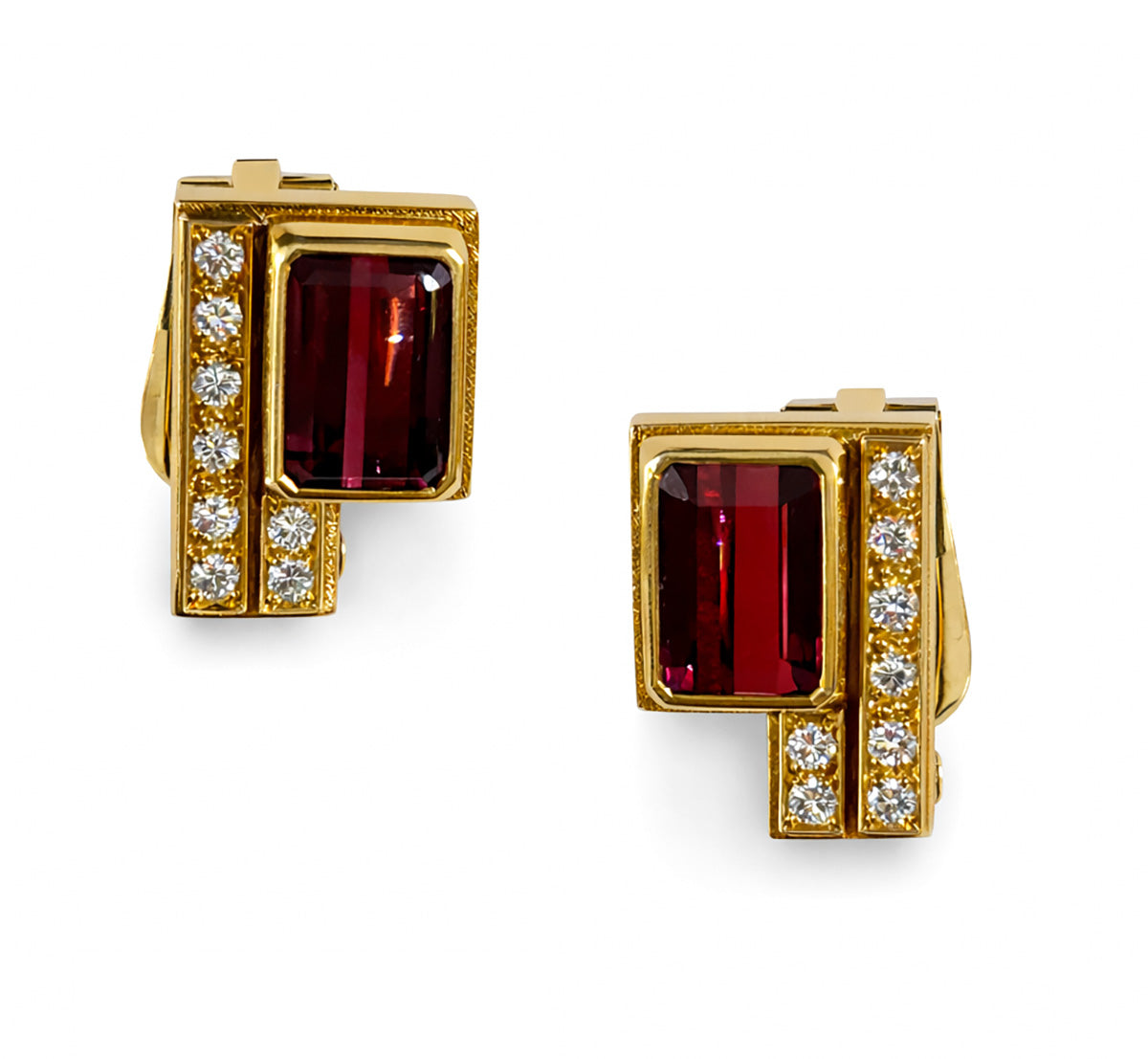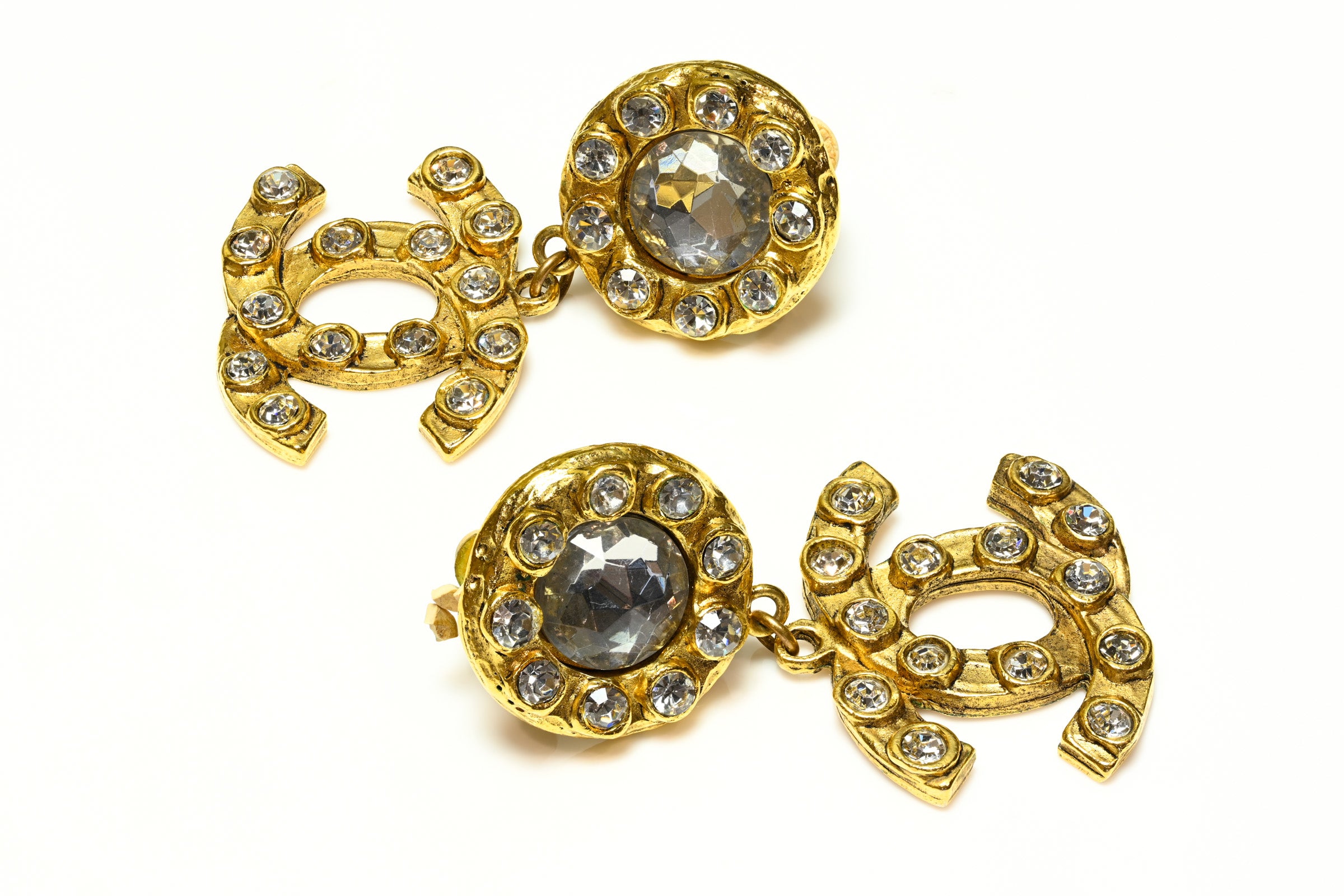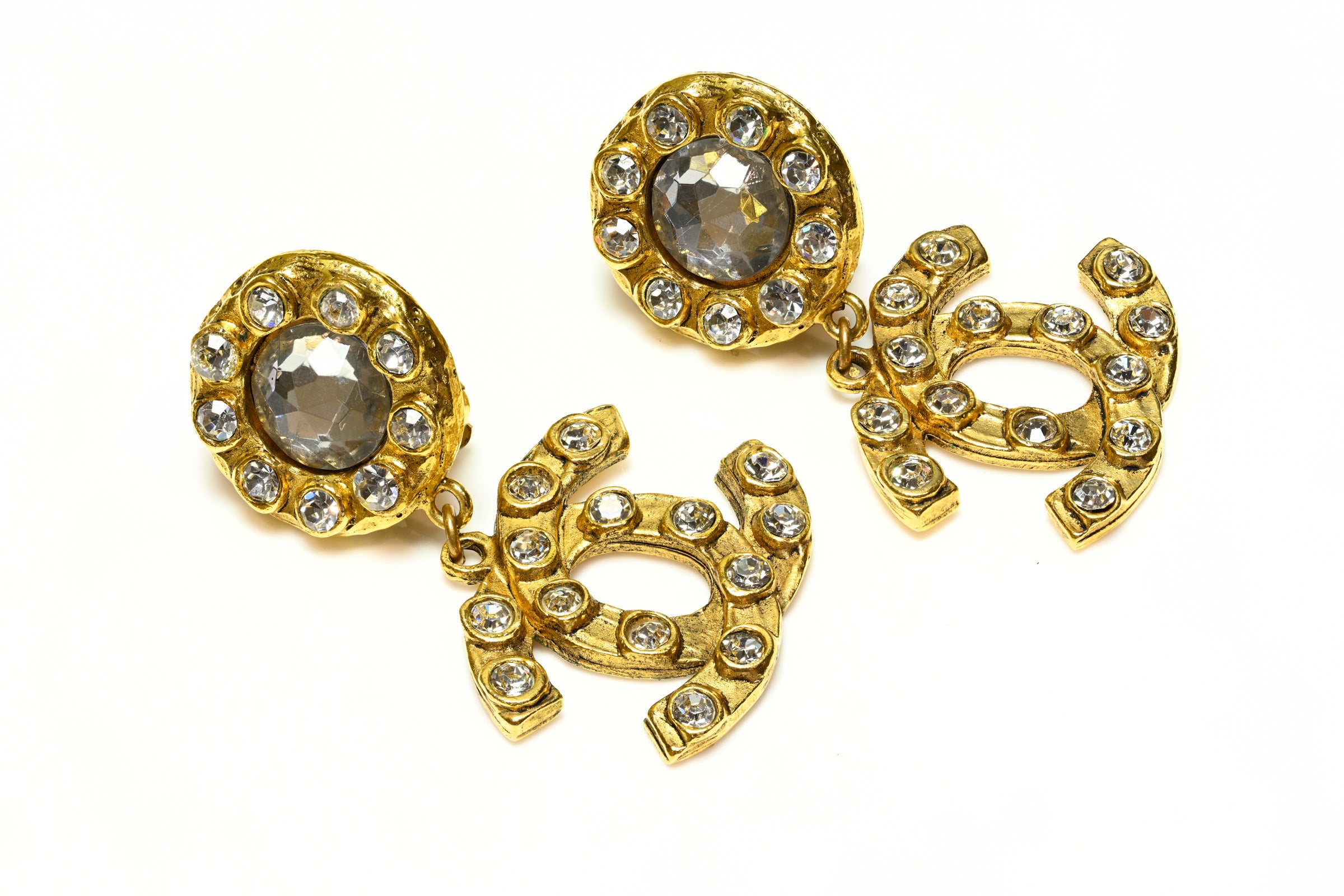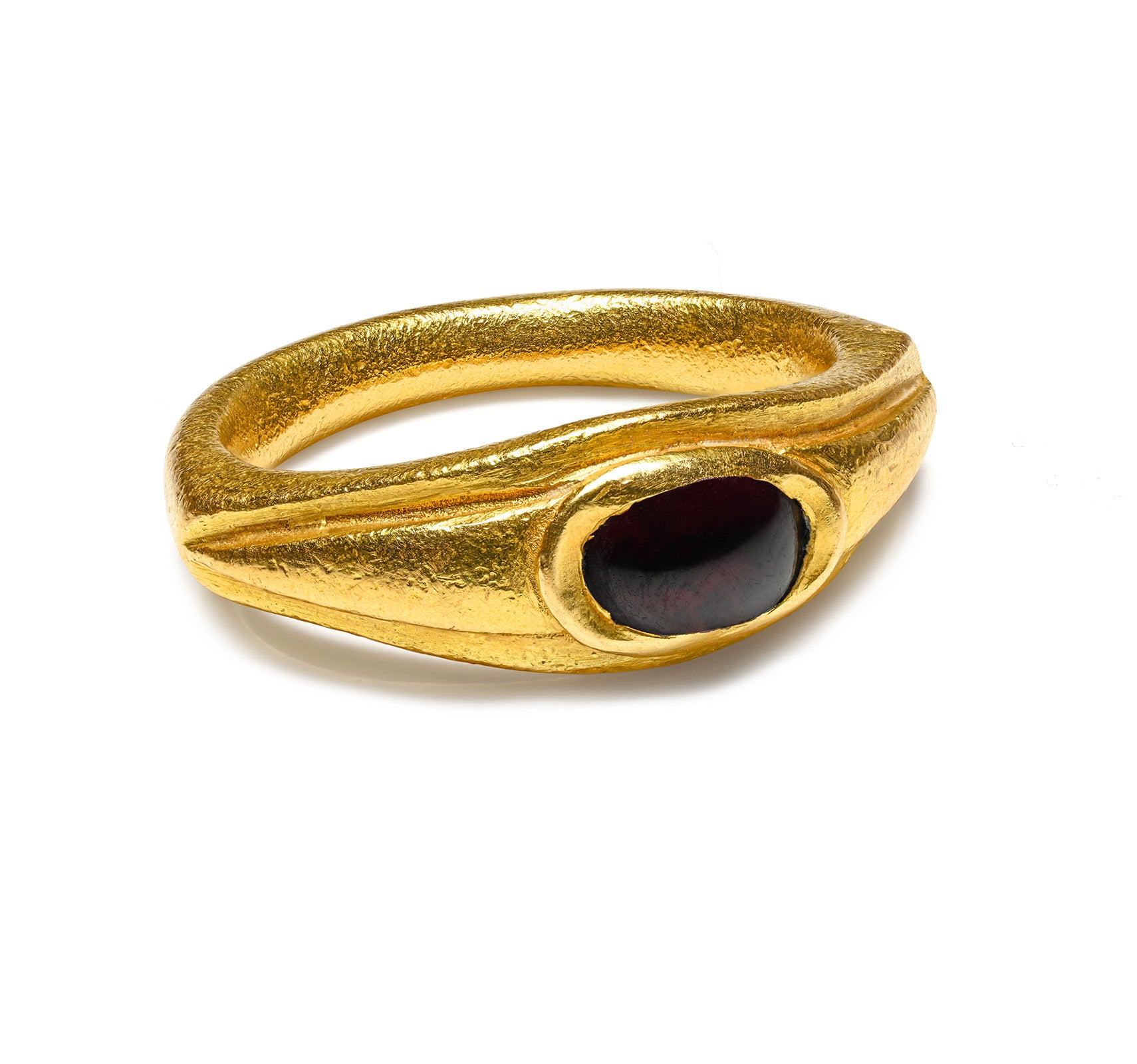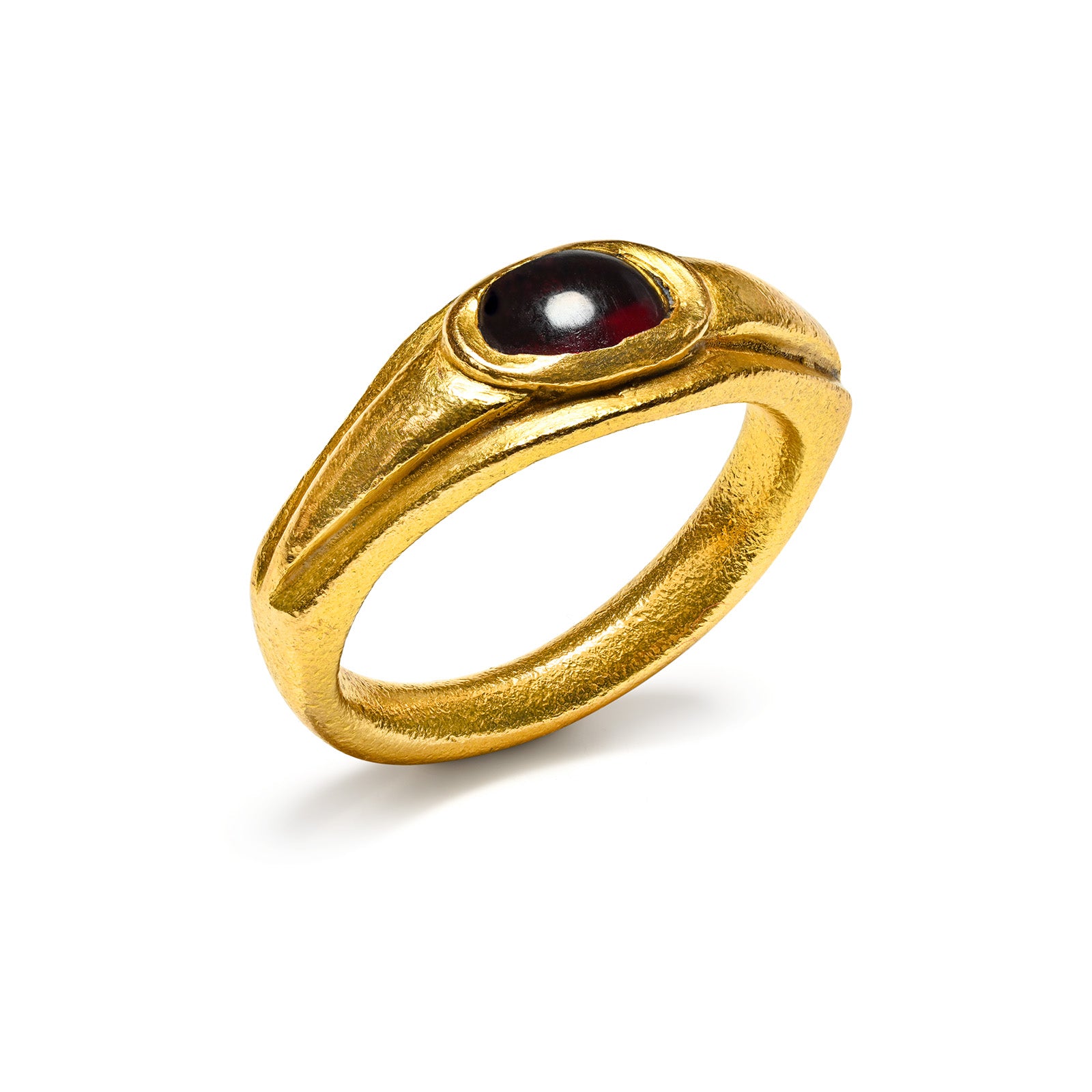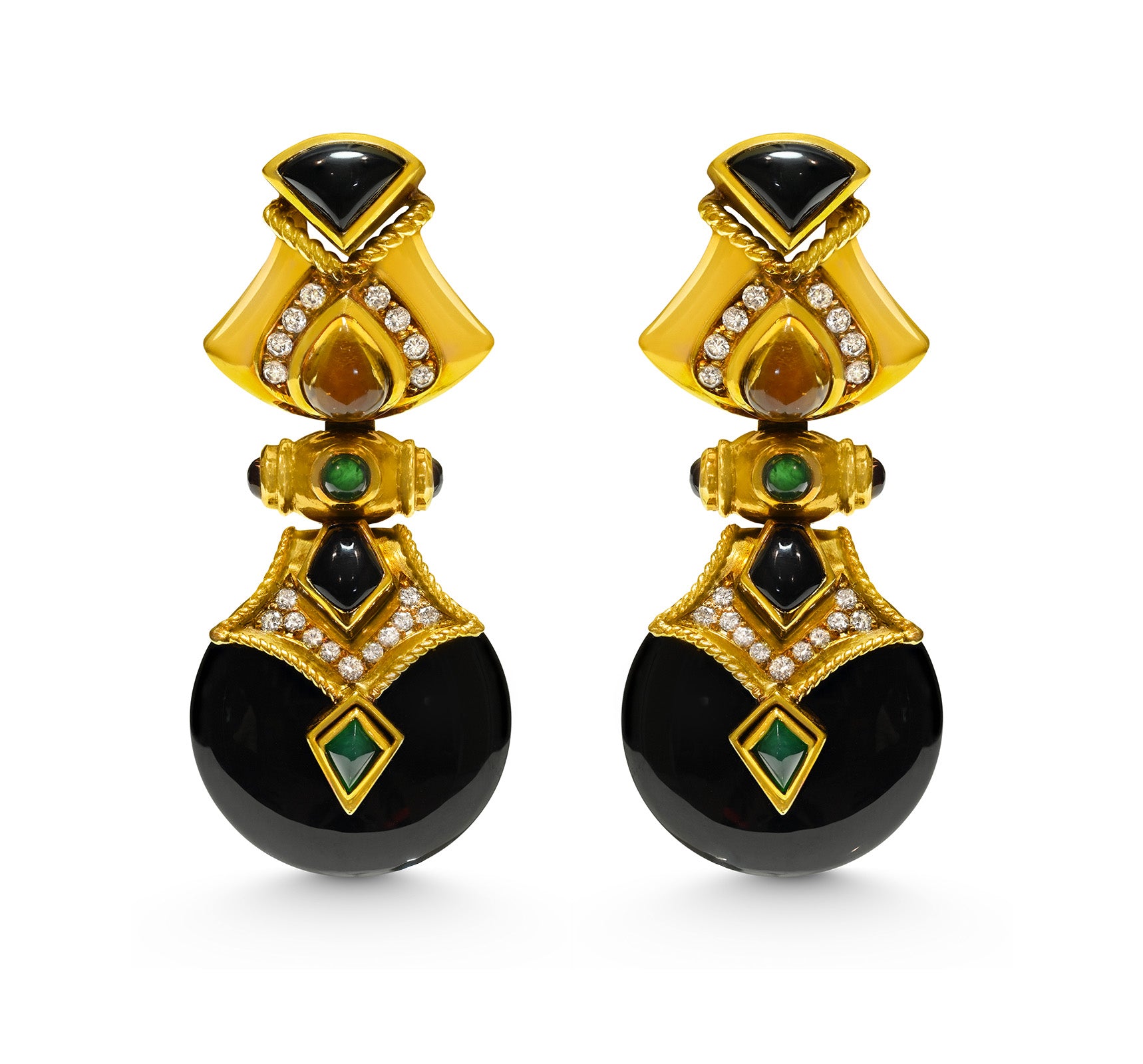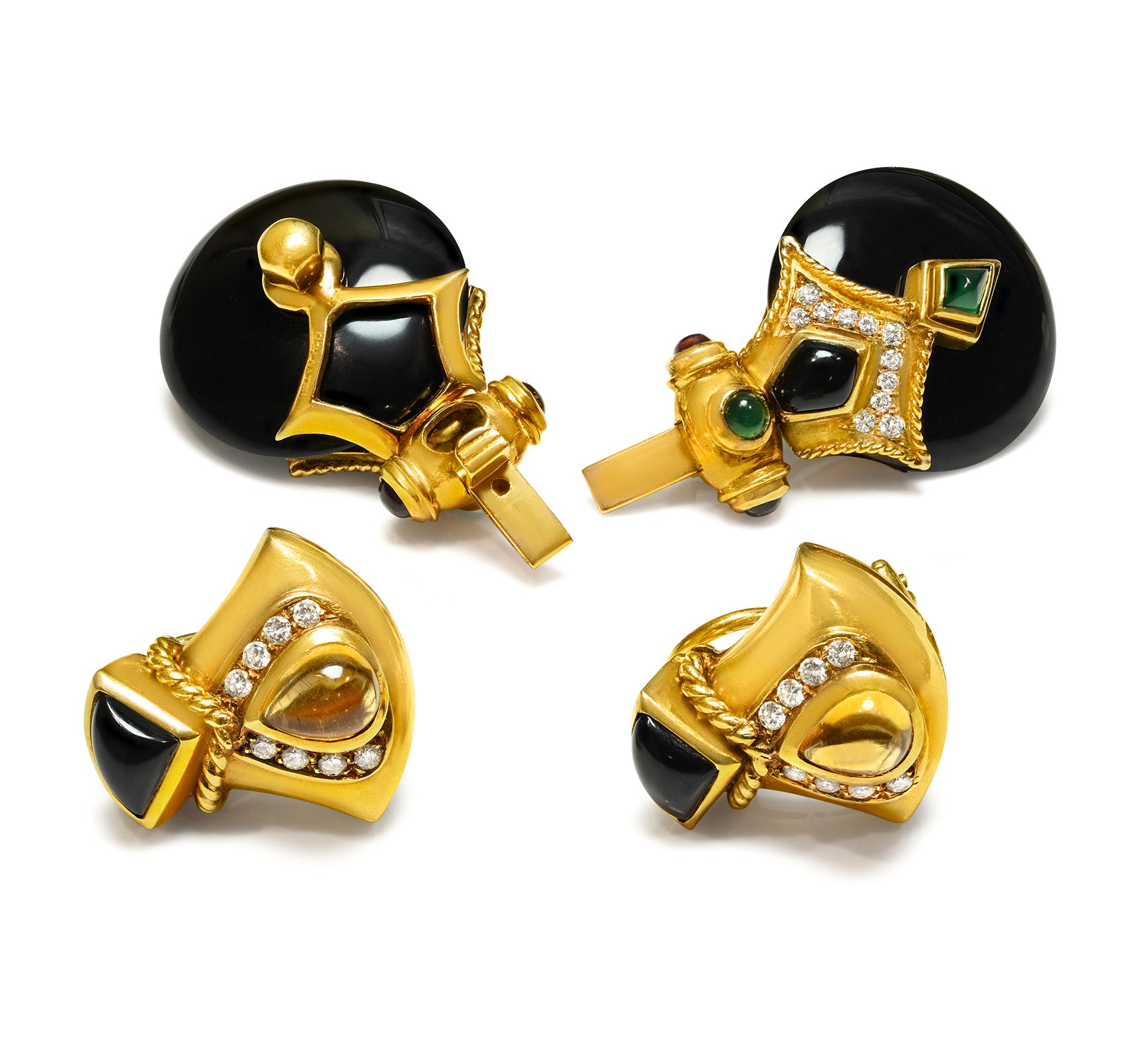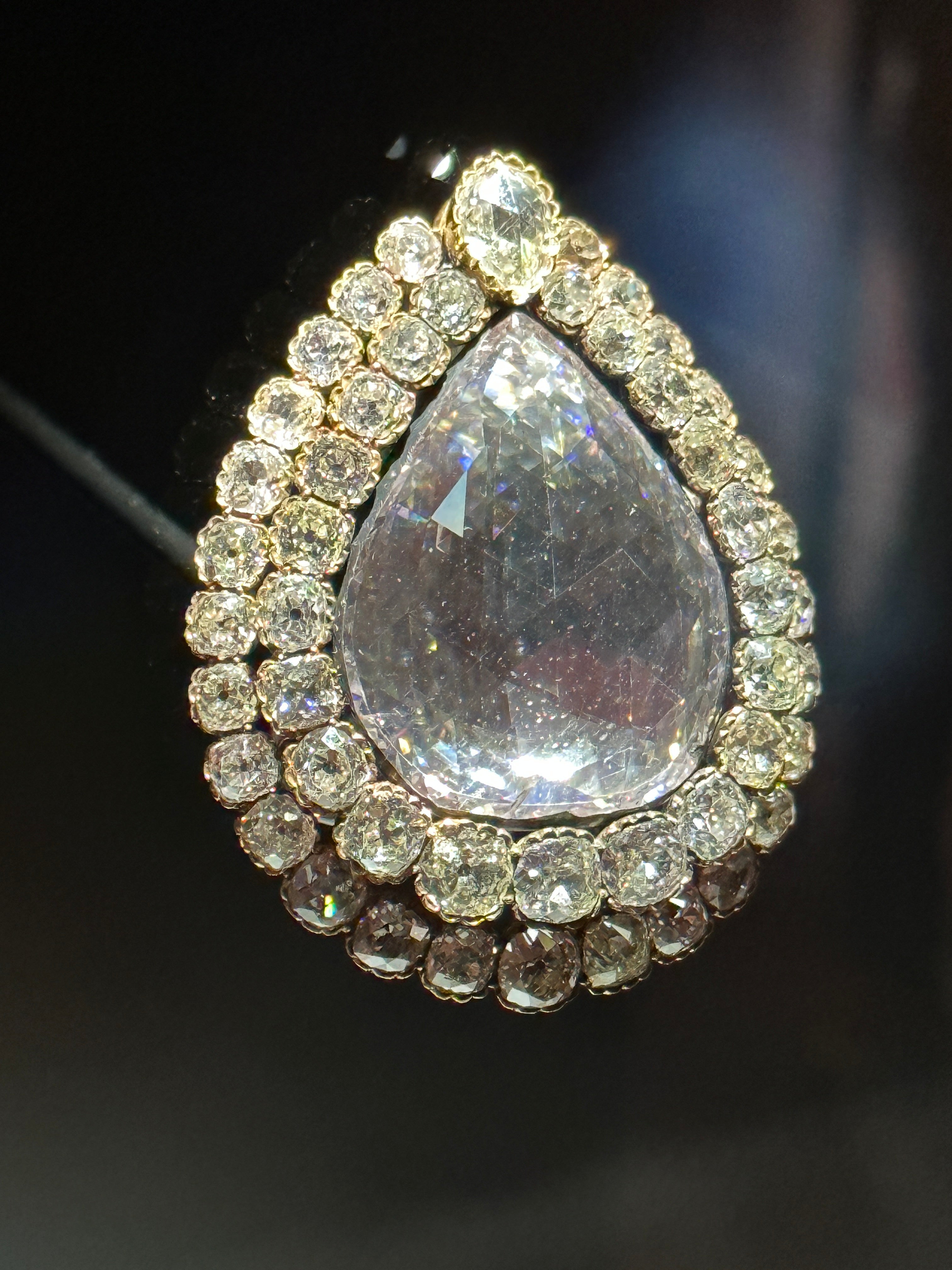
The Spoonmaker's Diamond – A Story of Intrigue
Renowned for its captivating legend and rich history, the Spoonmaker's Diamond embodies the splendor and artistic mastery of the Ottoman Empire.
Kept today in Istanbul’s Topkapı Palace Museum, this extraordinary gem continues to fascinate gemologists, historians, and visitors alike, weaving together stories of fortune, mystery, and remarkable transformation—from humble obscurity to world-renowned fame.
Its incredible journey, from being allegedly discovered in a modest junkyard to becoming one of the palace’s most admired treasures, never fails to intrigue and captivate the imagination.

The Spoonmaker's Diamond displayed at Topkapı Palace (Source: Karakalem via Wikimedia Commons)
The Spoonmaker's Diamond - Legendary Origin
Weighing approximately 86 carats, the Spoonmaker's Diamond (Kaşıkçı Elması in Turkish) is distinguished by its impressive clarity and distinctive pear-shaped form.
Its name derives from a popular legend: a humble spoonmaker stumbled upon the diamond while searching through discarded items, unaware of its immense value. According to the tale, he sold it cheaply to a jeweler, unknowingly parting with a fortune.
Though the precise origins of the diamond remain shrouded in mystery, this folklore adds significantly to its enduring allure.
An Exquisite Setting
Today, the Spoonmaker's Diamond rests in an elegant silver setting, displayed prominently within a glass case on the wall of the third room in the Imperial Treasury section of Topkapı Palace’s "Conqueror’s Pavilion."
Its beauty is further enhanced by a double row of 49 old mine-cut diamonds encircling it, amplifying its brilliance. Above its pointed tip sits another large pear-shaped diamond, complementing the design and echoing archival records from Sultan Mahmud II's reign, which indicate the gem’s shape has remained consistent over time.
This thoughtful arrangement is said to evoke the image of a luminous full moon surrounded by a sparkling night sky, a design that has secured the diamond’s reputation as one of the world’s most beautiful gems for centuries.
A Gemstone of Global Significance
The Spoonmaker’s Diamond is recognized as the fourth-largest diamond of its kind in the world, ranking among other legendary gems such as the Koh-i-Noor, the Hope Diamond, and the Cullinan Diamond.
Its impressive size and exceptional clarity make it particularly desirable in the gemstone market.
Gemologists, historians, and collectors alike value the diamond not only for its stunning beauty and considerable carat weight but also for its historical significance, which ties it inseparably to the rich tapestry of Ottoman history.
Not as Perfect as It Seems?
A detailed study published in The Australian Geologist magazine by Dr. Murat Hatipoglu, Isil Meyanci, Cansu Turkdofan, Deniz Comert, and Ozge Temal sheds new light on the true nature of the Spoonmaker's Diamond.
Contrary to popular belief, the gem displayed today might not actually be a brilliant-cut diamond. The paper, Rumors and Contradictions About the Spoonmaker's Diamond, suggests that, despite its appearance, the stone is actually a large, pear-shaped rose-cut diamond with a foiled, flat back.
This metal foil, when viewed from various angles, gives the deceptive impression that the stone possesses a fully faceted underside. This unusual feature was first documented in 1968, when damage to the diamond’s setting revealed its hidden construction during an examination.
The study also provides insights into the gem’s original size. When cutting diamonds, artisans typically seek to preserve as much of the rough stone’s weight as possible. Considering historical cutting techniques and the capabilities of the period's "shaving masters," researchers estimate that approximately 50-60% of the original rough diamond’s weight was lost during the cutting process.
Thus, based on the current carat weight of the Spoonmaker's Diamond, the original rough stone likely weighed around 132 carats.
Mysterious Origins
The precise origins of the Spoonmaker's Diamond remain unclear, wrapped in layers of legend and speculation.
Some stories claim that the diamond once belonged to Ali Pasha of Tepelena, an influential ruler who exercised considerable autonomy within the Ottoman Empire during the late 18th and early 19th centuries.

Ali Pasha of Tepelena (Source: Louis Dupré via Wikimedia Commons)
Although its origins are uncertain, this very mystery adds significantly to its allure, making it a particularly valuable and intriguing artifact in the Topkapı Palace treasury. Historians and gem enthusiasts continue to explore possible connections between the diamond and important historical figures and events.
Despite speculation that its story could date back even further, most accounts suggest that the Spoonmaker's Diamond entered the Imperial Treasury of Topkapı Palace during the reign of Sultan Mehmet IV in the 17th century. From that moment onward, it became a powerful symbol of wealth, prestige, and authority, handed down through successive generations of Ottoman sultans and prominently featured in imperial ceremonies.
Throughout its long history, the Spoonmaker's Diamond has been closely associated with numerous significant historical episodes—including Ali Pasha’s turbulent rule and the evolving political landscape of the Ottoman Empire. Its extraordinary journey, passing through the hands of various owners—from a humble fisherman to the imperial sultans themselves—mirrors the shifting dynamics of power and fortune within the empire.
These historical connections deepen the diamond’s appeal, making it an enduring source of fascination for anyone intrigued by the splendor and complexities of Ottoman history.
Popular Legends
One captivating story associated with the Spoonmaker’s Diamond concerns its discovery. Legend has it that a poor fisherman, wandering aimlessly along the shoreline near Yenikapi in Istanbul, stumbled upon a glistening stone among the debris. Unsure of what it was, he examined it closely, then kept it in his pocket for several days before finally visiting the jewelers' market.
The first jeweler he approached gave the stone a brief glance and said dismissively, "It's a piece of glass. You can keep it if you wish, or I'll offer you three spoons for your trouble." Believing the stone worthless and grateful for even this modest exchange, the fisherman accepted the spoons, unknowingly surrendering an invaluable gem.
Thus, according to this widely told story, the diamond earned its famous moniker: the "Spoonmaker’s Diamond." Eventually, the stone came to the attention of a vizier who acquired it for the Sultan’s treasury.
Another variation, mentioned by sources such as Wikipedia, suggests the vizier may have acquired the diamond directly from the fisherman.
Some Istanbul travel guides recount a different version, describing the original discoverer as "a farmer who found it lying on the ground and sold it to a dealer," after which it reached the Sultan in the 17th century.
Others speculate that the diamond earned its name due to its spoon-like shape, while some believe its finder was literally a spoonmaker. Despite these differing accounts, the fisherman’s legendary encounter remains the most poignant and widely accepted origin of the diamond’s name.
These stories have significantly enriched the Spoonmaker's Diamond's mystique, making it both a beloved tourist attraction at Topkapı Palace and a treasured cultural relic in Turkish history. The diamond’s enduring appeal lies precisely in this intriguing blend of artistry, folklore, and historical significance.
Another compelling legend from the late 18th century involves French soldiers, specifically Captain Camus, who was taken prisoner during conflicts with Ali Pasha.
According to certain tales, Napoleon's mother purportedly offered the Sultan a magnificent diamond in exchange for the release of her son's beloved companion, Captain Camus. Though lacking concrete historical proof, this romanticized narrative has become embedded in the diamond's lore, illustrating how the Spoonmaker's Diamond has continually been linked to prominent historical figures and dramatic events.
Additionally, some theories suggest a connection between the Spoonmaker's Diamond and the Pigot Diamond, once considered England's largest diamond. Due to similarities in their histories and reported weights—such as the Pigot Diamond's documented weight of 47.38 carats—some have speculated that the two stones might actually be one and the same. However, substantial differences in physical characteristics make this unlikely.
Nonetheless, the mysterious disappearance of the Pigot Diamond in the 1820s adds yet another layer of intrigue, deepening the Spoonmaker's Diamond’s enigmatic and fascinating story.
The Spoonmaker's Diamond vs. The Cullinan Diamond
While the Spoonmaker’s Diamond is significantly smaller than the famed Cullinan Diamond—the largest diamond ever discovered, weighing an astonishing 3,106 carats—it nevertheless holds a distinctive position in diamond lore. Its historical relevance, combined with intriguing legends surrounding its discovery and ownership, grant it a unique appeal.
In contrast, the Cullinan Diamond is primarily celebrated for its enormous size and its subsequent division into several noteworthy gems, many of which adorn British Crown Jewels.
The Spoonmaker's Diamond, however, captivates the imagination not just by virtue of its size, but through the fascinating stories that define its identity.

The Cullinan Diamond (Source: Plate I, 1908 via Wikimedia Commons)
Significance in Ottoman Society
Within Ottoman history, the Spoonmaker’s Diamond occupies a prominent place, closely tied to the legacies of its rulers. It is believed that Sultans Selim III (1789–1807) and Mahmud II (1808–1839) both possessed the diamond at different times.
Due to its impressive size and striking beauty, the diamond frequently played a ceremonial role, symbolizing wealth, prestige, and imperial authority during important court events. The inclusion of this gem in the Imperial Treasury of Topkapı Palace underscores the vital role gemstones played in Ottoman society—not merely as decorative ornaments, but as powerful symbols of political strength and cultural sophistication.
In Ottoman culture, the Spoonmaker’s Diamond transcended material value, symbolizing both the empire’s wealth and its refined artistic achievements. Its presence within the palace treasury reinforced the Sultan’s divine right to rule, embodying both political authority and cultural stature.
The diamond’s elaborate setting—encircled by 49 historic mine-cut diamonds—further enhances its symbolic meaning, evoking celestial imagery akin to a luminous star in a night sky. Such iconography highlights the Ottoman belief in the sacred interconnectedness between the spiritual and material realms, attributing to the diamond an almost divine significance.
Interestingly, the Spoonmaker’s Diamond gained wider popular recognition through the 1965 film Topkapi, starring Melina Mercouri and Peter Ustinov. While the film prominently featured the diamond, the plot primarily revolved around the attempted theft of another of Topkapi Palace’s legendary treasures—the emerald-encrusted dagger of Sultan Mahmud I.
Historical Intrigues
When Ali Pasha captured Preveza in 1798, Selim III was the reigning Sultan of the Ottoman Empire. Selim III (24 December 1761 – 28 or 29 July 1808) was a reform-minded ruler who governed from 1789 until his overthrow in 1807. He was ultimately deposed and imprisoned by the Janissaries, who installed his cousin Mustafa IV as Sultan. Selim III was later assassinated by a squad of conspirators following another Janissary rebellion.
Historical narratives suggest that Letizia Ramolino Bonaparte—Napoleon’s mother—sent the diamond to the Sultan around 1798 or 1799, making Selim III the most plausible recipient of this famed "gift." His successor, Mahmud II, reigned from 1808 until after Ali Pasha’s assassination in 1822. If the stories connecting Ali Pasha to the diamond have any historical validity, then either Selim III or Mahmud II was likely the first Ottoman Sultan to possess the gem.
However, it is also plausible that the diamond’s entry into the Ottoman treasury occurred under much more ordinary circumstances. If any of the popular "naïve fisherman" legends hold truth, the diamond could have arrived even earlier, around 1800 or 1801.
The Topkapı Palace and the Diamond’s Legacy
Today, the Spoonmaker's Diamond resides within Istanbul’s majestic Topkapı Palace, which served as the primary residence of Ottoman sultans for nearly four centuries. The diamond is prominently displayed in the "Conqueror’s Pavilion," within the Imperial Treasury section.
As a UNESCO World Heritage site, Topkapı Palace attracts millions of visitors each year, all eager to explore its rich history and marvel at treasures like the Spoonmaker's Diamond. The placement of this legendary gem within the palace underscores its importance as both a national treasure and a powerful reminder of Turkey’s imperial past.
The Spoonmaker’s Diamond, ranked sixty-third among the world’s most famous diamonds, is a cherished part of Turkey’s cultural heritage and a testament to the grandeur of Ottoman artistic and historical legacy.
Despite the numerous conflicting stories and ambiguous claims surrounding the diamond’s origins, no significant historical research has definitively clarified its true provenance. A thorough investigation of Ottoman imperial records remains crucial to uncovering the authentic history behind this enigmatic gem.

